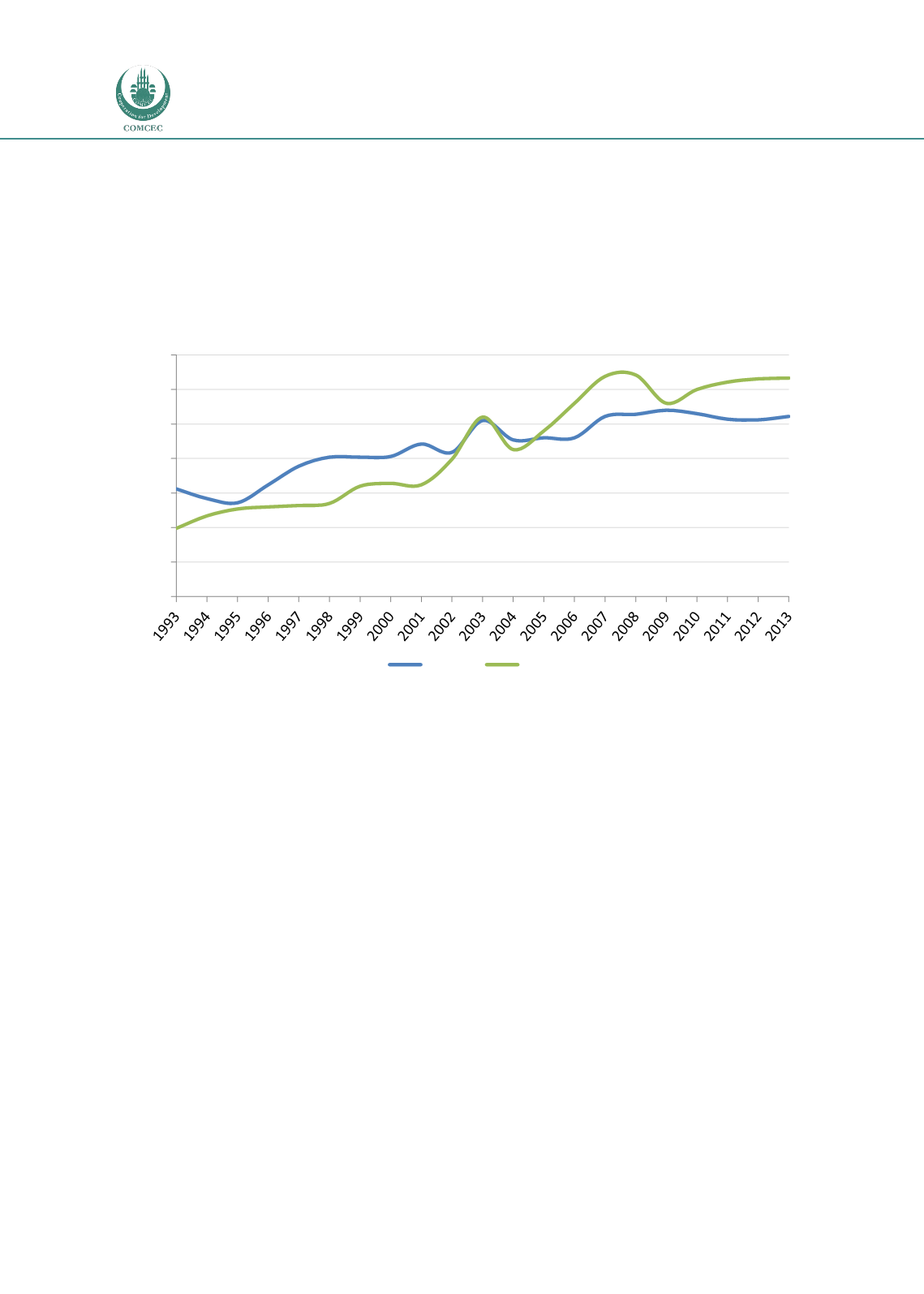

Promoting Agricultural Value Chains:
In the OIC Member Countries
74
5.2
The milk value chain in Egypt
Egypt is one of the main milk producing countries in the Middle East and Africa with a total
milk production, both from cows and buffaloes, of about 5.77 million tonnes in 2013
(FAOSTAT, 2015). Milk production has grown continuously over the past decade (se
e Figure 5-5)and estimates indicate that there is still considerable scope for growth.
Figure 5-5 Fresh milk production in Egypt, 1993-2013
Source: FAOSTAT, 2015
Most of the milk produced in Egypt is consumed directly. The rest feeds into a relatively large
dairy industry that offers a broad range of products, such as raw milk, butter, cheese, yoghurt,
condense milk and ice cream. While per capita consumption of dairy products is at 21 kg per
year, which is significantly below the world average of about 50 kg per person, Egypt
represents a large emerging market for milk and dairy products due to a growing population,
rising urban demand and changing consumption patterns away from traditional, loosely sold
foods towards packaged and processed food items (El Lateif Aita et al., 2012). Therefore,
particular opportunities for growth are discerned for the processing and manufacturing
segments to cater for Egypt’s growing urban centres.
At the same time, the dairy sector struggles with a number of barriers concerning both the
production and consumption ends of the value chain. On the production side, most of the milk
is produced by smallholders with 1-8 cattle and is sold loosely as raw milk on the informal
market. Due to low average productivity, Egypt is still a net importer of dairy products –
mostly skimmed milk powder, butter and high quality cheeses. On the consumption side, per
capita intake of milk is relatively low by North African standards and dairy products do not
feature in the diet as much as in neighbouring countries such that milk constituted only 3.2
percent of the total food supply in Egypt in 2011 (FAO, 2014; Oxford Business Group, 2012b).
0
0.5
1
1.5
2
2.5
3
3.5
Million tonnes
Buffalo
Cow

















